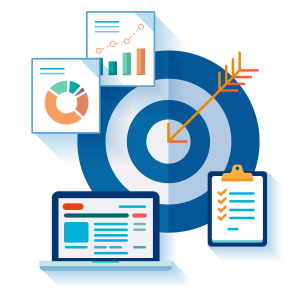Introduction
Conversion rate is a critical metric for e-commerce websites, measuring the percentage of website visitors who complete a desired action (e.g., making a purchase, signing up for a newsletter). Increasing conversion rates directly translates to higher sales and revenue. This technical report aims to explore effective strategies that can be implemented to boost conversion rates that e-commerce web developers recommend.
1. Optimize Website Performance
- Improve Page Load Speed: Users expect fast-loading websites. Compress images, minimize HTTP requests, leverage caching techniques, and optimize code to ensure quick page load times.
- Mobile Optimization: With the increasing use of mobile devices for online shopping, it’s essential to have responsive design and mobile-friendly interfaces that provide seamless user experiences across various screen sizes.
- Streamline Checkout Process: Simplify the checkout process by reducing the number of steps required. Offer guest checkouts or allow users to save their information for future purchases.
2. Enhance User Experience
- Clear Navigation and Intuitive Design: Make it easy for users to find products/categories they are looking for through clear navigation menus and intuitive search functionality.
- High-Quality Product Images: Use high-resolution product images from multiple angles with zoom-in capabilities so that customers can get a detailed view before making purchasing decisions.
- Detailed Product Descriptions: Provide comprehensive product descriptions including specifications, features, dimensions, materials used—all relevant information potential buyers may need.
3. Build Trust and Credibility
- Customer Reviews/Testimonials: Display genuine customer reviews/testimonials prominently on product pages—positive feedback builds trust in potential buyers’ minds.
- Security Certifications/Trust Badges: Highlight security certifications (SSL) and trust badges (e.g., PayPal Verified) during checkout processes—reassuring customers about secure transactions/data protection measures.
- Easy Contact Information Access: Clearly display contact information such as phone numbers, email addresses, and physical address to build credibility and provide customer support.
4. Personalization and Recommendations
- Tailored Product Recommendations: Leverage user data (previous purchases/browsing history) to offer personalized product recommendations—increasing the chances of cross-selling or upselling.
- Dynamic Pricing: Implement dynamic pricing strategies based on factors like demand, inventory levels, or customer segments to optimize conversion rates.
- Customized Shopping Experience: Allow users to create wishlists, save favorite items for later purchase, or receive personalized notifications for restocks/sales.
5. Streamline Payment Options
- Multiple Payment Methods: Offer a variety of payment options including credit/debit cards, digital wallets (e.g., PayPal), bank transfers—to accommodate different customer preferences.
- Guest Checkout Option: Not all customers want to create an account during the checkout process. Provide a guest checkout option that simplifies the purchase process without requiring registration.
6. Implement Effective Call-to-action (CTA)
- Clear and Visible CTAs: Use visually appealing buttons with clear text that stands out from other page elements—guiding users toward desired actions such as “Buy Now” or “Add to Cart.”
- Urgency Techniques: Create a sense of urgency through limited-time offers (“Limited Stock Available!”) or countdown timers (“Sale Ends in…”) near CTAs—encouraging immediate action.
Conclusion
Boosting conversion rates on e-commerce websites requires implementing effective strategies across various aspects—from optimizing website performance/user experience, building trust/credibility among potential buyers, personalizing shopping experiences/recommendations, streamlining payment options/tailoring call-to-action techniques. E-commerce website developers understand these critical factors and prioritizes them while developing e-commerce solutions for their clients. By incorporating these strategies into your e-commerce website’s design/functionality/marketing efforts, you can significantly improve conversion rates—driving higher sales and revenue while providing a seamless shopping experience for your customers.



